Prove that x^-1 uniquely satisfies xx^-1 = 1 (ILIEKMATHPHYSICS)
This video is part of the “Real Analysis” series I am making.
Thanks and enjoy the video!
Real Analysis Playlist: • Real Analysis [ILIEKMATHPHYSICS]
Cancellation Law of Multiplication proof video: • Prove if a ≠ 0 and ab = ac then b = c, can...
Here is our description of the real number system using the ten axioms. This approach is similar to the one given in Apostol's Calculus book, Volume I, Second Edition.
We are given a set R, whose elements are called real numbers. We equip R with two binary operations, addition (+) and multiplication (•), so that for every pair of real numbers a and b, a + b and a • b are real numbers. In short, we may write a • b as ab.
Axiom 1 (Commutative Laws). For all a,b in R, a + b = b + a and ab = ba.
Axiom 2 (Associative Laws). For all a,b,c in R, (a + b) + c = a + (b + c) and (ab)c = a(bc).
Axiom 3 (Distributive Law). For all a,b,c in R, a(b + c) = ab + ac.
Axiom 4 (Existence of Zero). There exists an element 0 in R such that for all x in R, x + 0 = x.
Axiom 5 (Existence of Negatives). For all x in R, there exists an element -x in R such that x + (-x) = 0.
Axiom 6 (Existence of One). There exists an element 1 in R distinct from 0 such that for all x in R, 1 • x = x.
Axiom 7 (Existence of Reciprocals). For all nonzero x in R, there exists an element x^-1 in R such that x • x^-1 = 1.
Definition. For each a,b in R, we define a - b = a + (-b).
Definition. For each a,b in R where b ≠ 0, we define a/b = a • b^-1.
We equip R with a subset R+, whose elements we call positive real numbers, which satisfy the following axioms:
Axiom 8 (Closure of R+ under + and •). For all x,y in R+, x + y and xy belong to R+.
Axiom 9 (Trichotomy). For all x in R, exactly one of the following is true: x belongs to R+, x = 0, or -x belongs to R+.
Definition. Let a,b in R. We say “a ﹥ b” means a - b belongs to R+. We say “a ﹤ b” means b ﹥ a. We say “a ≥ b” means a ﹥ b or a = b. We say “a ≤ b” means b ≥ a.
Definition. We define R- = {x in R | -x in R+}. The elements of this set we call negative real numbers.
Definition. Let S be a subset of real numbers and b is an element of S. We say b is a smallest element of S if for all x in S, x ≥ b. Using properties of order, it is easy to check that b is unique.
Definition. Let S be a subset of real numbers and w is a real number.
(1) We say w is an upper bound of S if for all x in S, x ≤ w.
(2) We say w is a lower bound of S if for all x in S, x ≥ w.
(3) We say S is bounded above if S has an upper bound. We say S is bounded below if S has a lower bound. We say S is bounded if S is both bounded above and bounded below.
Axiom 10 (Completeness of R). Every nonempty subset S of real numbers that is bounded above has a least upper bound. That is, the set of all upper bounds of S has a smallest element.








![Prove that every statement is either true or false [ILIEKMATHPHYSICS]](https://images.mixrolikus.cc/video/XpjHFzOZzls)
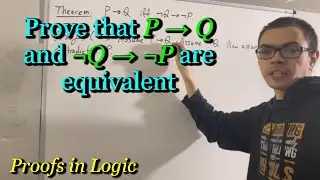
![Suppose Q. Then if P then Q (Proof) [ILIEKMATHPHYSICS]](https://images.mixrolikus.cc/video/UmouLA3b1FA)
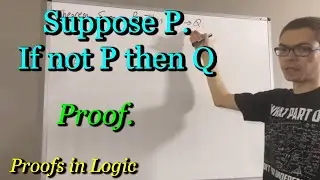
![Proof of Disjunctive Syllogism (P or Q. Not P. Therefore Q.) [ILIEKMATHPHYSICS]](https://images.mixrolikus.cc/video/4-ls3IO1HOQ)
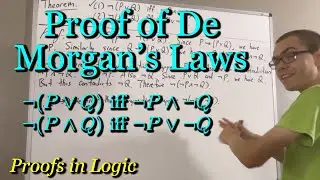
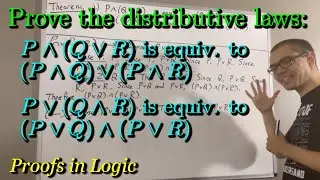
![If P → Q and Q → R, then P → R (Proof) [ILIEKMATHPHYSICS]](https://images.mixrolikus.cc/video/ghW3SzxajWQ)
![P → (Q → R) iff (P ∧ Q) → R) Proof [ILIEKMATHPHYSICS]](https://images.mixrolikus.cc/video/05095JQ_GgE)
![Existential Quantifier distributes over disjunction (Proof) [ILIEKMATHPHYSICS]](https://images.mixrolikus.cc/video/wjmqEzntPus)
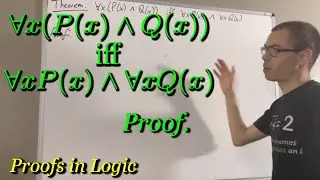
![Proof of the Quantifier Negation Laws [ILIEKMATHPHYSICS]](https://images.mixrolikus.cc/video/LDDwUJQGNUM)